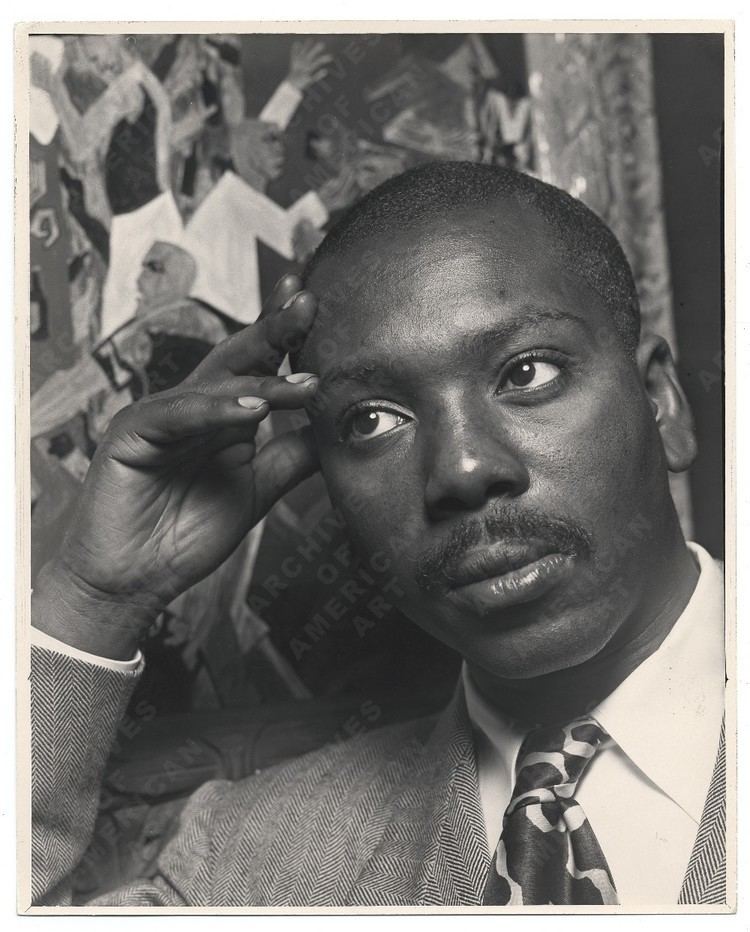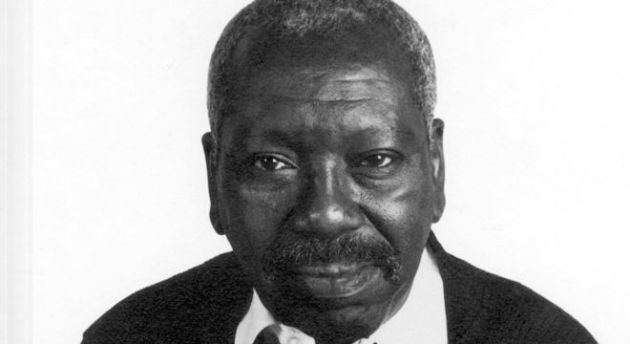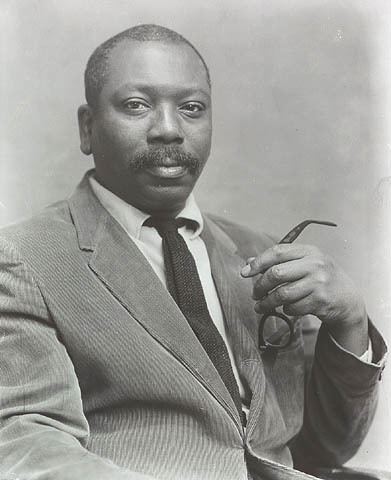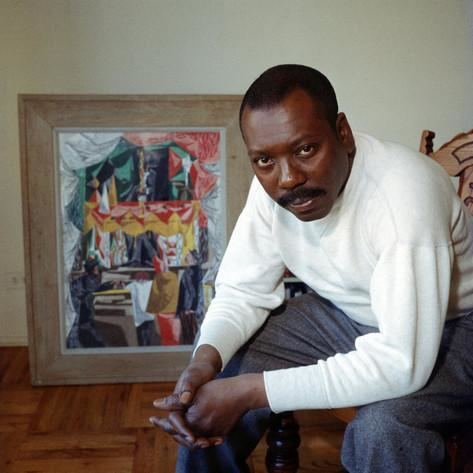Nationality American Role Painter | Name Jacob Lawrence Known for Painting | |
 | ||
Died June 9, 2000, Seattle, Washington, United States Artwork And the migrants kept comi, In the North the Negro had bette, They were very poor, The Wedding, The migrants arrived in Similar People | ||
Jacob lawrence and the making of the migration series
Jacob Lawrence (September 7, 1917 – June 9, 2000) was an African-American painter known for his portrayal of African-American life. But not only was he a painter, storyteller, and interpreter; he also was an educator. Lawrence referred to his style as "dynamic cubism," though by his own account the primary influence was not so much French art as the shapes and colors of Harlem. He brought the African-American experience to life using blacks and browns juxtaposed with vivid colors. He also taught and spent 15 years as a professor at the University of Washington.
Contents
- Jacob lawrence and the making of the migration series
- Jacob lawrence
- Life
- Education and career
- Special works of art
- Recognition
- Legacy
- Selected collections
- References

Lawrence is among the best-known 20th-century African-American painters. He was 23 years old when he gained national recognition with his 60-panel Migration Series, painted on cardboard. The series depicted the Great Migration of African-Americans from the rural South to the urban North. A part of this series was featured in a 1941 issue of Fortune Magazine. The collection is now held by two museums: the odd-numbered paintings are on exhibit in the Phillips Collection in Washington, D.C., and the even-numbered are on display at MOMA in New York. Lawrence's works are in the permanent collections of numerous museums, including the Philadelphia Museum of Art, the Museum of Modern Art, the Whitney Museum, the Phillips Collection, Metropolitan Museum of Art, the Brooklyn Museum, and Reynolda House Museum of American Art. He is widely known for his modernist illustrations of everyday life as well as epic narratives of African American history and historical figures.

Jacob lawrence
Life

Jacob Lawrence was born in 1917 in Atlantic City, New Jersey. Jacobs's parents moved him and his siblings from the rural south to the north for a chance at a better life. They divorced in 1924, after which his mother put him and his two younger siblings into foster care in Philadelphia. When he was 13, he and his siblings moved to New York City, where he reconnected with his mother in Harlem. Lawrence was introduced to art shortly after that when their mother enrolled him in after school classes at an arts and crafts settlement house in Harlem, called Utopia Children's Center, in an effort to keep him busy. The young Lawrence often drew patterns with crayons. In the beginning, he copied patterns of his mother's carpets. One of his art teachers noted great potential in Lawrence.
After dropping out of school at 16, Lawrence worked in a laundromat and a printing plant. He continued with art, attending classes at the Harlem Art Workshop, taught by the noted African-American artist Charles Alston. Alston urged him to attend the Harlem Community Art Center, led by the sculptor Augusta Savage. Savage secured Lawrence a scholarship to the American Artists School and a paid position with the Works Progress Administration, established during the Great Depression by the administration of President Franklin D. Roosevelt. Lawrence continued his studies as well, working with Alston and Henry Bannarn, another Harlem Renaissance artist, in the Alston-Bannarn workshop.
On July 24, 1941, Lawrence married the painter Gwendolyn Knight, also a student of Savage. She supported his work and even helped him with captions for many of his series of paintings. They were married until his death in 2000.
In October 1943 (during the Second World War), Lawrence was drafted in the United States Coast Guard and served with the first racially integrated crew on the USCGC Sea Cloud, under Carlton Skinner. He continued to paint and sketch while in the Coast Guard, documenting the experience of war around the world. He produced 48 paintings during this time, all of which have been lost. But after the war, he created his famous War Series. Back in New York, Lawrence continued to paint. He grew depressed, however, and in 1949, he checked himself into Hillside Hospital in Queens, where he stayed for 11 months. He painted as an inpatient. These works differed from his usual artworks because they displayed sadness and agony. Shortly after leaving Hillside, Lawrence turned to theater.
After many years in New York, in 1970 Lawrence and Knight moved to the Pacific Northwest, where he had been invited to be an art professor at the University of Washington. They settled in Seattle. Some of his works are displayed in the university's Meany Hall for the Performing Arts and in the Paul G. Allen Center for Computer Science & Engineering. Lawrence's painting, Theater, installed in the main lobby of Meany Hall, was commissioned by the University in 1985 for that space.
Education and career
For Jacob Lawrence's education, he took works Progress Administration art classes in New York (1934-1937) and he also studied at Harlem Art Workshop in New York in 1937. Harlem provided crucial training for the majority of black artists in the United States. Lawrence was one of the first artists trained in and by the African-American community in Harlem. Throughout his lengthy artistic career, Lawrence concentrated on exploring the history and struggles of African Americans. He often portrayed important periods in African-American history. The artist was 21 years old when his series of paintings of the Haitian general Toussaint L’Ouverture, who led the revolution of the slaves that eventually gained independence, was shown in an exhibit of African-American artists at the Baltimore Museum of Art. This impressive work was followed by a series of paintings of the lives of Frederick Douglass and Harriet Tubman, as well as a series of pieces about the abolitionist John Brown.
Lawrence was 23 when he completed the 60-panel set of narrative paintings entitled Migration of the Negro, now called the Migration Series. The series was a portrayal of the Great Migration, when hundreds of thousands of African Americans moved from the rural South to the North after World War I and showed their adjusting to Northern cities. It was exhibited in New York at the Museum of Modern Art, and brought him national recognition. His early work involved general depictions of everyday life in Harlem and also a major series dedicated to Black History (1940-1941). In the 1940s Lawrence was given his first major solo exhibition at the Museum of Modern Art in New York City and became the most celebrated African-American painter in the country. Lawrence taught at Black Mountain College during the 1946 Summer Art Institute, where he was influenced by the teaching of Josef Albers. This is when his form and design changed in his style of realism.
The "hard, bright, brittle" aspects of Harlem during the Great Depression inspired Lawrence as much as the colors, shapes and patterns inside the residents' homes. "Even in my mother's home," Lawrence told historian Paul Karlstrom, "people of my mother's generation would decorate their homes in all sorts of color... so you'd think in terms of Matisse." He used water-based media throughout his career. Lawrence started to gain some notice for his dramatic and lively portrayals of both contemporary scenes of African-American urban life as well as historical events, all of which he depicted in crisp shapes, bright, clear colors, dynamic patterns, and through revealing posture and gestures. However, his mother still hoped he would choose a career in the Civil Service.
Shortly after moving to Washington state, Lawrence did a series of five paintings on the westward journey of African-American pioneer, George Washington Bush. These paintings are now in the collection of the State of Washington History Museum.
Lawrence illustrated an adaptation of Aesop's Fables for the University of Washington Press in 1997.
Lawrence taught at several universities. He continued to paint until a few weeks before his death in June 2000 at the age of eighty-two. His last commissioned public work, the mosaic mural New York in Transit, was installed in October 2001 in the Times Square subway station in New York City.
Special works of art
Recognition
As a result of his active social Realism, it brought him recognition. He broke the "color barrier."
His work is in the permanent collections of numerous museums, including the Metropolitan Museum of Art, the Museum of Modern Art, the Whitney Museum, the Phillips Collection, the Brooklyn Museum, the National Gallery of Art and Reynolda House Museum of American Art. In May 2007, the White House Historical Association (via the White House Acquisition Trust) purchased Lawrence's The Builders (1947) for $2.5 million at auction. The painting hangs in the White House Green Room.
When Lawrence died on June 9, 2000, the New York Times described him as "One of America's leading modern figurative painters" and "among the most impassioned visual chroniclers of the African-American experience." His wife, artist Gwendolyn Knight Lawrence, died several years later in 2005. Jacob Lawrence made 319 artworks in his life. Before he died, he and his wife set up the Jacob and Gwendolyn Knight Lawrence Foundation. It serves as the official Estates of both artists. It maintains a searchable archive of nearly 1,000 images of their work. The U.S. copyright representative for the Jacob and Gwendolyn Knight Lawrence Foundation is the Artists Rights Society. Major traveling exhibitions of his works have been presented in museums across the country.
